The celebrated Mr. K gives kudos to those who, in the ’60s and ’70s, followed Spidey, the FF, the Hulk and the rest of the Marvel Age first wave…
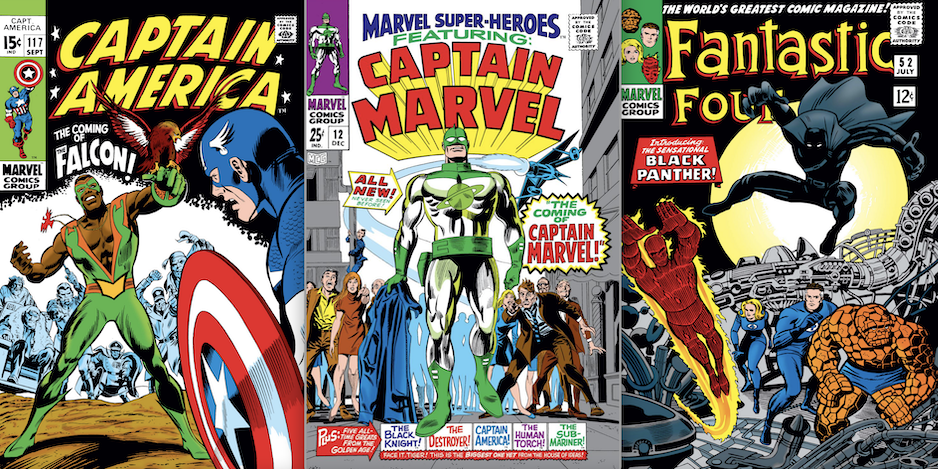
—
UPDATED 11/9/23: Hey, it’s “Let’s Go Through the Vault For the Hell of It” time! Dig this “reprint,” which originally ran in Nov. 2021. Right on. — Dan
—
By PAUL KUPPERBERG
In the course of a little less than two years between 1961 and 1963, Stan Lee, Larry Lieber, Jack Kirby, Steve Ditko, Don Heck, and a select few other artists/storytellers created (or some cases, recreated) the remarkable stream of heroes and antiheroes that would grow to become the Marvel Universe: Fantastic Four, Spider-Man, Ant-Man, the Hulk, Thor, Sub-Mariner, Captain America, Iron Man, X-Men, Dr. Strange, and Sgt. Fury… and that’s not to mention the slew of supervillains ranging from Dr. Doom to Loki who regularly confronted and confounded the heroes.
During the birth of the Marvel Age, the number of titles they could publish was famously kept low by their distributor, Independent News, a sister company of rival publisher DC Comics. As a result, Marvel was forced to have heroes share titles, like Captain America and Iron Man in Tales of Suspense or Giant Man and the Hulk in Tales to Astonish. But come a change of distributors in 1968 and Marvel was free to publish as many titles as the market could bear. Not only did the three double books break up into six solo titles, but Stan and company were now free to introduce new characters and new titles in which to feature them.
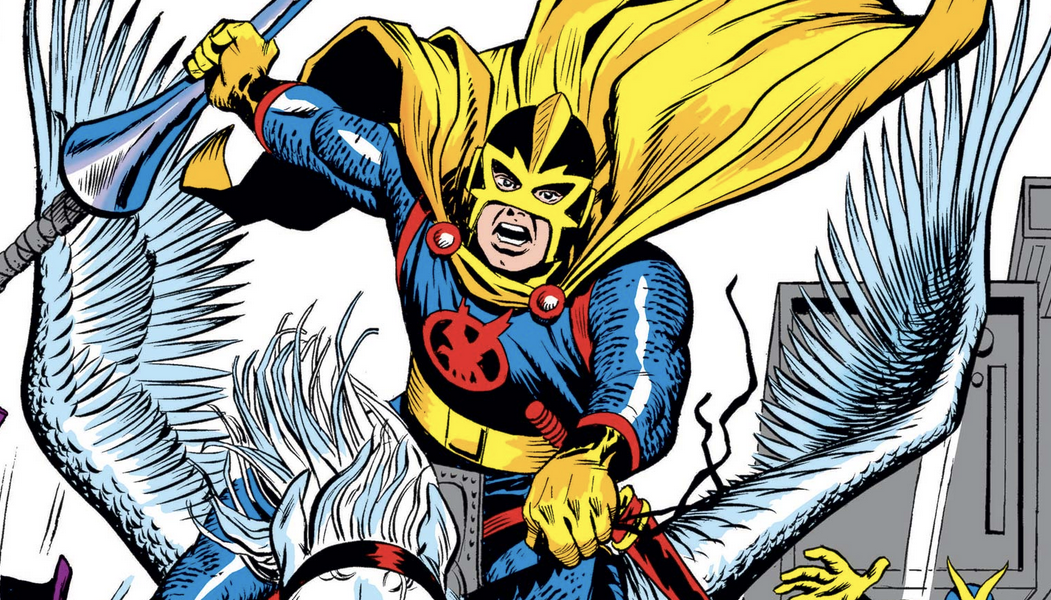
Not that Marvel had put an embargo on the creation of new heroes during the restrictive Independent News days. It’s just that they were more likely than not to make their debuts as guest-stars in the pages of already running titles, especially flagship title Fantastic Four, which was a major incubator for new characters.
I date the Second Wave of Marvel Heroes from the introduction of the “Nick Fury, Agent of S.H.I.E.L.D.” strip in Strange Tales #135 in 1965, for reasons explained below. Your opinion may vary, but it’s my column, so….
Here then, in order of their appearances, MY 13 FAVORITE MARVEL SECOND WAVE SUPERHEROES
—
Strange Tales #135 (Aug. 1965). Yes, Fury had been already around for a few years, but I’ve long believed that this was a radical enough reinvention of the World War II hero to make the Nick Fury, Agent of S.H.I.E.L.D. strip a whole other animal. Spy master Fury was a direct response to the James Bond and Man from U.N.C.L.E. craze, but Stan and Jack (and soon thereafter Jim Steranko) shaped the genre to fit the medium and kicked off the Second Wave with a flourish.
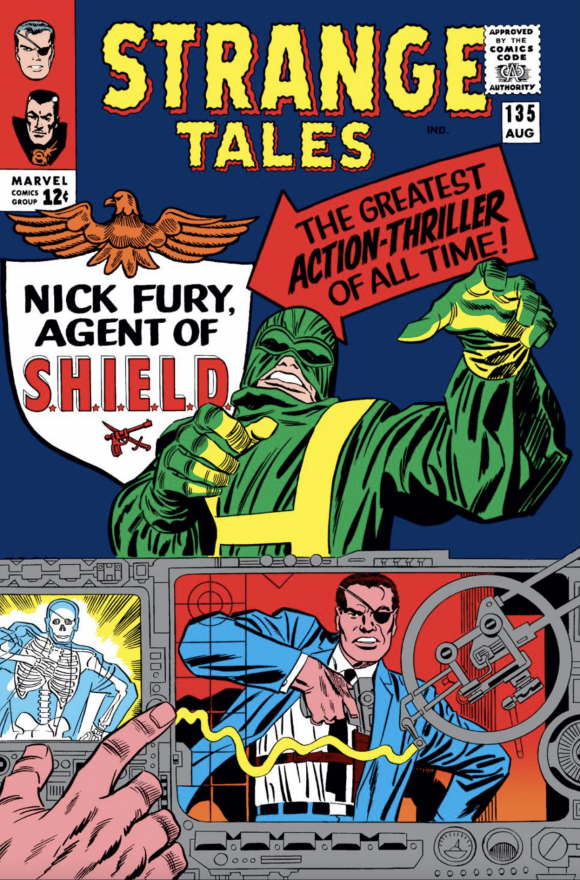
—
Fantastic Four #44 (Nov. 1965). Medusa and Gorgon had appeared in earlier stories, but it was in this issue that the Inhumans, superpowered residents of the hidden city of Attilan first appeared en masse, including the strong but silent Black Bolt, Medusa, Lockjaw, and the rest of the gang, courtesy of Lee, Kirby, and Joe Sinnott.
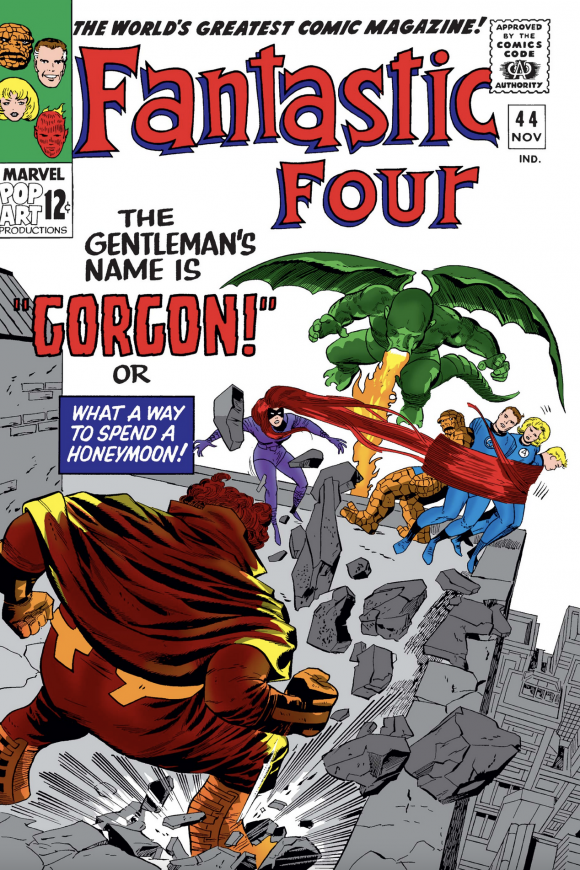
—
Fantastic Four #48 (Jan. 1966). The Silver Surfer. Oh. And Galactus, devourer of worlds. Writing long form serialized fiction (i.e., continuing comic book series) is always a scramble to, if not top what’s already been done, at least equal it in action and excitement. Stan and Jack were already four years into the series (with another four plus years to go) and had reached what was, to my and many other minds, the peak period of the FF’s first decade. The ideas were flowing, and readers were hungry for whatever these guys came up with… even a bloviating silver dude who rode a surfboard in outer space. Let me repeat that: He rode a surfboard in outer space. Talk about being on a roll!
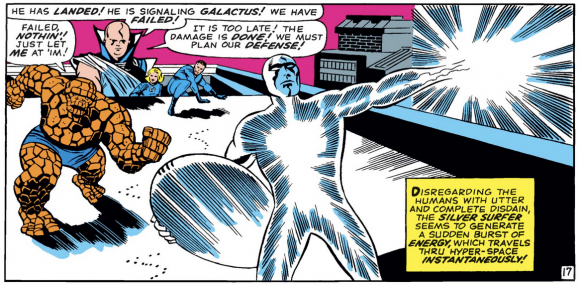
—
Fantastic Four #52 (July 1966). And then came Wakanda and the Black Panther. It was a gutsy move on their part to introduce a black superhero during the height of the 1960s Civil Rights wars, but I gather Jack would just as soon punch a racist as a Nazi and he never shied from controversary. What made the Panther so bold a character for the time was the creators’ defiance of then racial stereotypes, the jive-talkin’ street hustler, to make T’Challa the king he truly was.
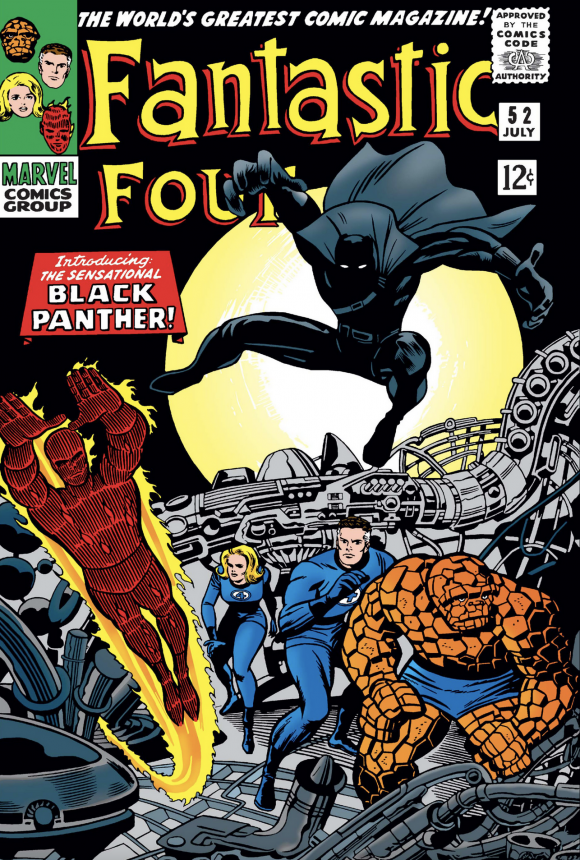
—
Fantastic Four #67 (Oct. 1967). Not part of an Abbott & Costello routine, my guess is that Him was originally intended to be a one-off antagonist, a scientific construct, a good “Frankenstein monster” who ends up destroying his evil creators, but yada yada yada returns years later to be transformed and rebranded as Adam Warlock.

—
The Avengers #47 (Dec. 1967). Dane Whitman, the Black Knight, would have a memorable solo turn in Marvel Super-Heroes #17 by Roy Thomas and Howard Purcell, but he made his debut here, taking over his late uncle’s winged horse-riding villainous alter ego and making him a good guy in a story by Thomas, John Buscema, and George Klein.
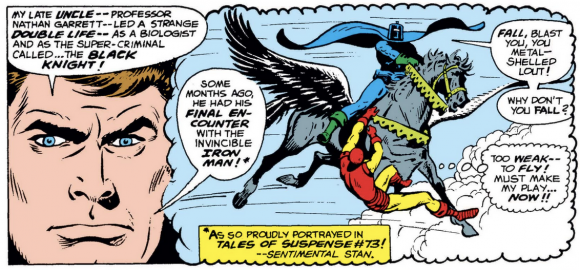
—
Marvel Super-Heroes #12 (Dec. 1967). Say the magic word and… boom! Marvel cleverly hijacks the trademark “Captain Marvel” from the 1940s Big Red Cheese for an alien military officer, Captain Mar-Vell of the Kree Imperial Militia. Captain Marvel by Roy Thomas and Gene Colan first appeared in Marvel Super-Heroes, the once (as Fantasy Masterpieces) and future reprint title that briefly served as a sort of showcase title for new ideas.
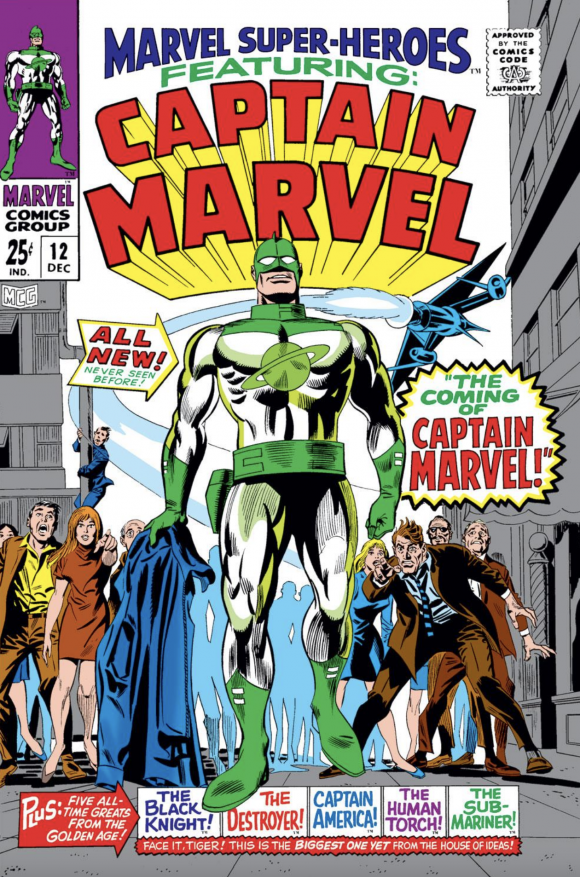
—
Marvel Super-Heroes #16 (June 1968). The Phantom Eagle flew briefly but he flew high and proud. Gary Friedrich created the story of a World War I fighter pilot with Air Force veteran Herb Trimpe, then running the Photostat machine in the Marvel Bullpen, and you would never know it was Herb’s first art job. The character made only a handful of appearances after this beautifully realized debut story.

—
Marvel Super-Heroes #18 (Jan. 1969). The Guardians of the Galaxy, created by Arnold Drake, Colan, and Mike Esposito. Whatever became of them?
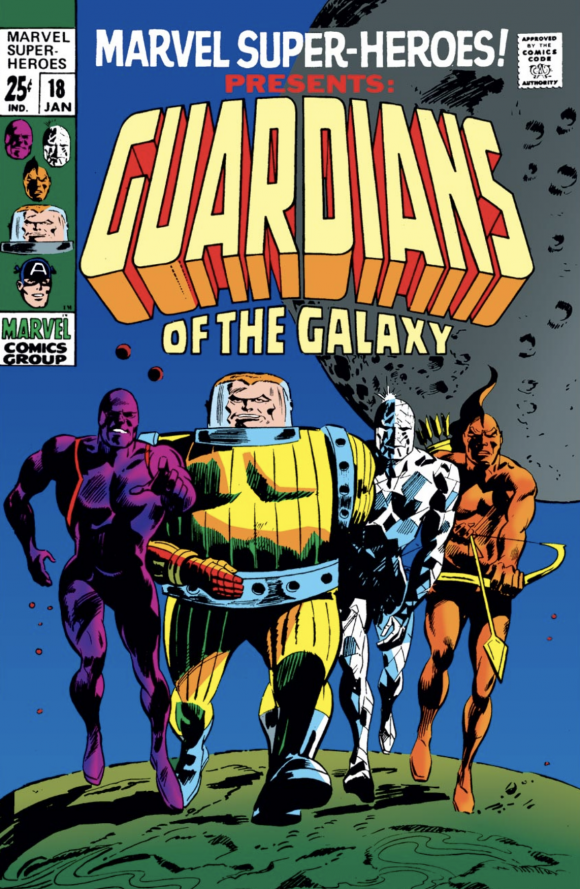
—
Captain America #117 (June 1969). Sam Wilson, aka the Falcon, now a staple of the MCU, first took flight in this Thomas/Colan issue of Cap.
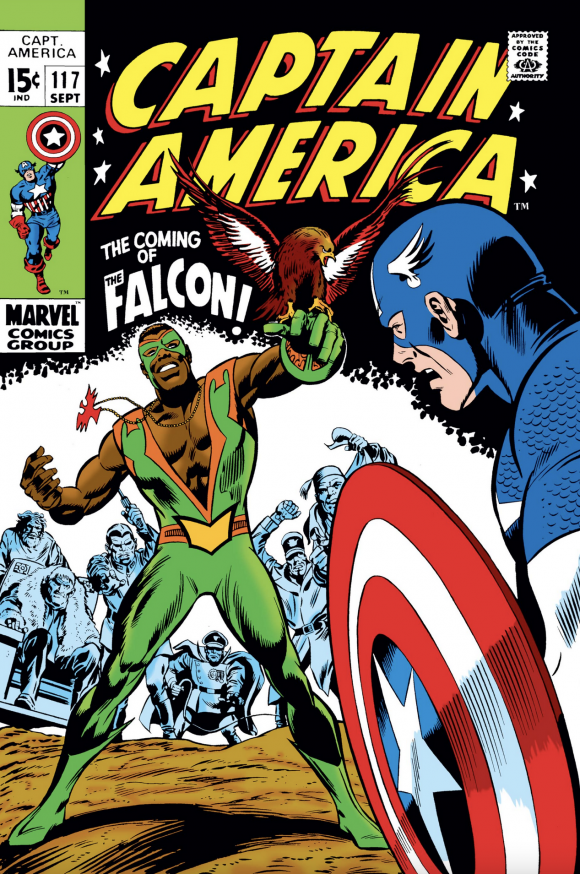
—
Conan the Barbarian #1 (October 1970). Not technically a Marvel hero, Conan was nonetheless an important addition to the publisher’s line-up, opening the company wide for a variety of sword-and-sorcery characters, many of them created by Robert E. Howard.
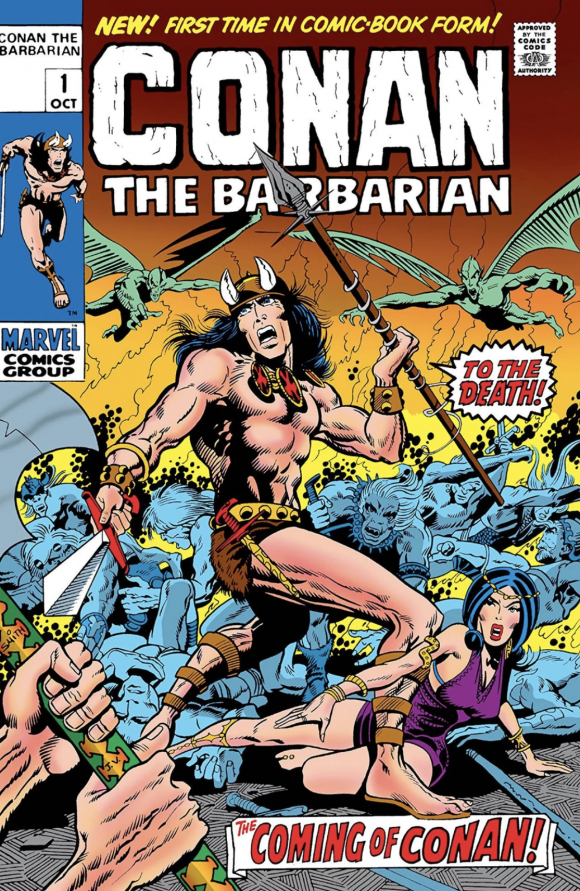
—
Marvel Premiere #1 (April 1972). Do I double dip on Him/Adam Warlock? Then so be it! From a half-thought-out one-off character, Thomas, Gil Kane, and Dan Adkins concocted a unique individual who would go on to have an impact on the entire Marvel Universe.
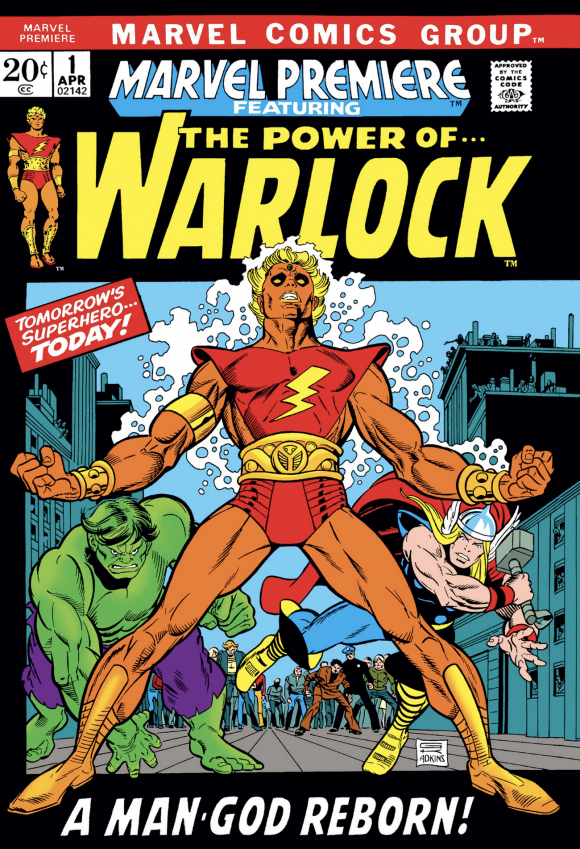
—
Luke Cage, Hero for Hire #1 (June 1972). Sweet Christmas! Luke Cage is proof that a character’s stereotypical roots can be overcome, and a well-rounded person can emerge. As good a writer as Archie Goodwin was, he was a 35-year-old white guy from Kansas City writing a tough urban street character; he was hamstrung by the Comics Code from using language that came even close to sounding like street dialect. But Luke endured to become another staple of the MCU.
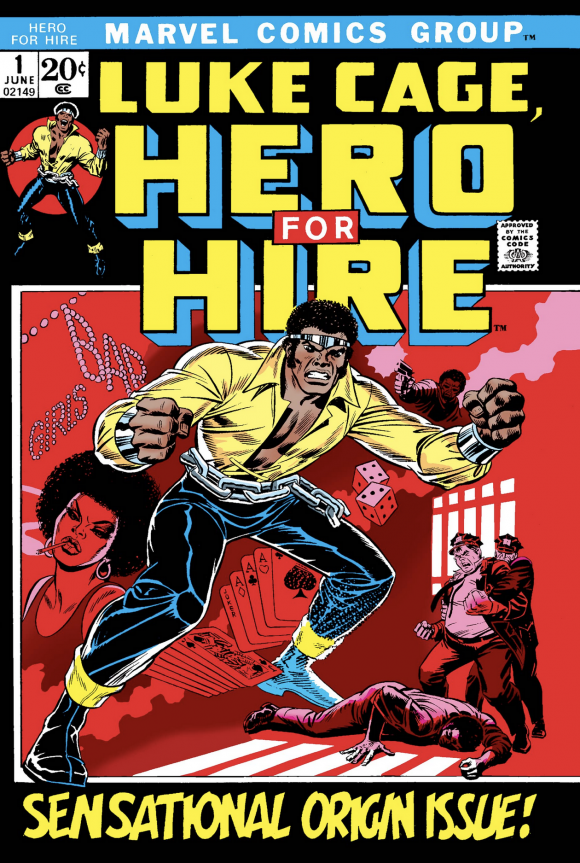
—
MORE
— PAUL KUPPERBERG: My 13 Favorite 1960s SUPERHERO COSTUMES. Click here.
— PAUL KUPPERBERG: My 13 Favorite Short-Lived Series of the 1960s. Click here.
—
Sure, you know Paul Kupperberg as the prolific writer of over a thousand comic books for such characters and series as Superman, Aquaman, Doom Patrol, Vigilante, Life with Archie, Bart Simpson, Scooby-Doo, and dozens more for DC Comics, Archie Comics, Bongo Comics, and others, and that he is also the creator of the series Arion, Lord of Atlantis, Checkmate and Takion, and is a former editor for DC, Weekly World News, and WWE Kids Magazine. But Paul is also the author of numerous books, including the superhero novel JSA: Ragnarok and the comics industry-based murder mystery, The Same Old Story, not to mention (but we will anyway) Paul Kupperberg’s Illustrated Guide to Writing Comics, I Never Write for the Money, But I Always Turn in the Manuscript for a Check, Direct Comments: Comic Book Creators in their Own Words, The Unpublished Comic Book Scripts of Paul Kupperberg and Son of the Unpublished Comic Book Scripts of Paul Kupperberg. You can follow Paul at PaulKupperberg.com and at Crazy8Press.com.

November 23, 2021
I love the Marvel version of Captain Mar-vell. I’m really disappointed the MCU totally skips his story. What a waste. But, if only the lawyers could have stayed out of it. It’s crazy you can’t call Captain Marvel, Captain Marvel. This poor character can’t catch a break. It’s bad enough DC lawyers him into bankruptcy so years later they buy his rights. But then they have to go and totally wack-a-mole his name and history.
November 24, 2021
The Falcon and Captain Marvel were first scripted by Stan Lee, not Roy Thomas.
November 24, 2021
One correction: Medusa may have appeared about a year prior in FF #36, but #44 WAS Gorgon’s first appearance…and his face undergoes some change after this first mysterious introduction. (Ditto for the appearance of Black Bolt, Triton, and others.) It’s pretty well known that the Inhumans were created to be a new title/team to compete with the fledgling Tower Comics and Harvey Comics entry into the superhero realm. But since that rumored entry died, so did plans for the Inhumans’ solo title, and so they became a running subplot in the FF for the next 20 issues, through #63.
November 9, 2023
While I resent Marvel for “stealing” the Captain Marvel name from the character that originated with Fawcett, the fact of the matter remains that it never would have happened if DC’s at-one-time leadership hadn’t sued Fawcett over the character in the first place. They weren’t foresighted enough to know they’d be shooting themselves in their future foot, just consumed by corporate jealousy over Cap’s better-than-Superman sales. Mar-vell as a character name could still have come about as a salute to the brand, but just given a different rank in the Kree militia. Whether Roy Thomas chose the name, or it was chosen by Stan Lee or another in Marvel management, it is still ironic that Thomas would go on years later to script adventures of the Marvel Family for DC.
November 9, 2023
I blame the judge back in the ’50s. He should have shut that lawsuit down in its tracks. There was so much “borrowing” of ideas going on from day 1 of the Golden Age and the start of comics. The fact that National only went after the title that was beating them in sales is very telling. I will always respect the original character out of respect to his creators. My biggest peeve is when folks write about the character pre-90s and they retroactively rename him for the Wizard. As I have always said, it’s a legal system and not a justice system.
November 10, 2023
I always thought it was appropriate that Marvel would have a Captain Marvel!
November 10, 2023
Until today I had no idea Phantom Eagle was Herb Trimpe’s first art job. And still my favorite of his works.